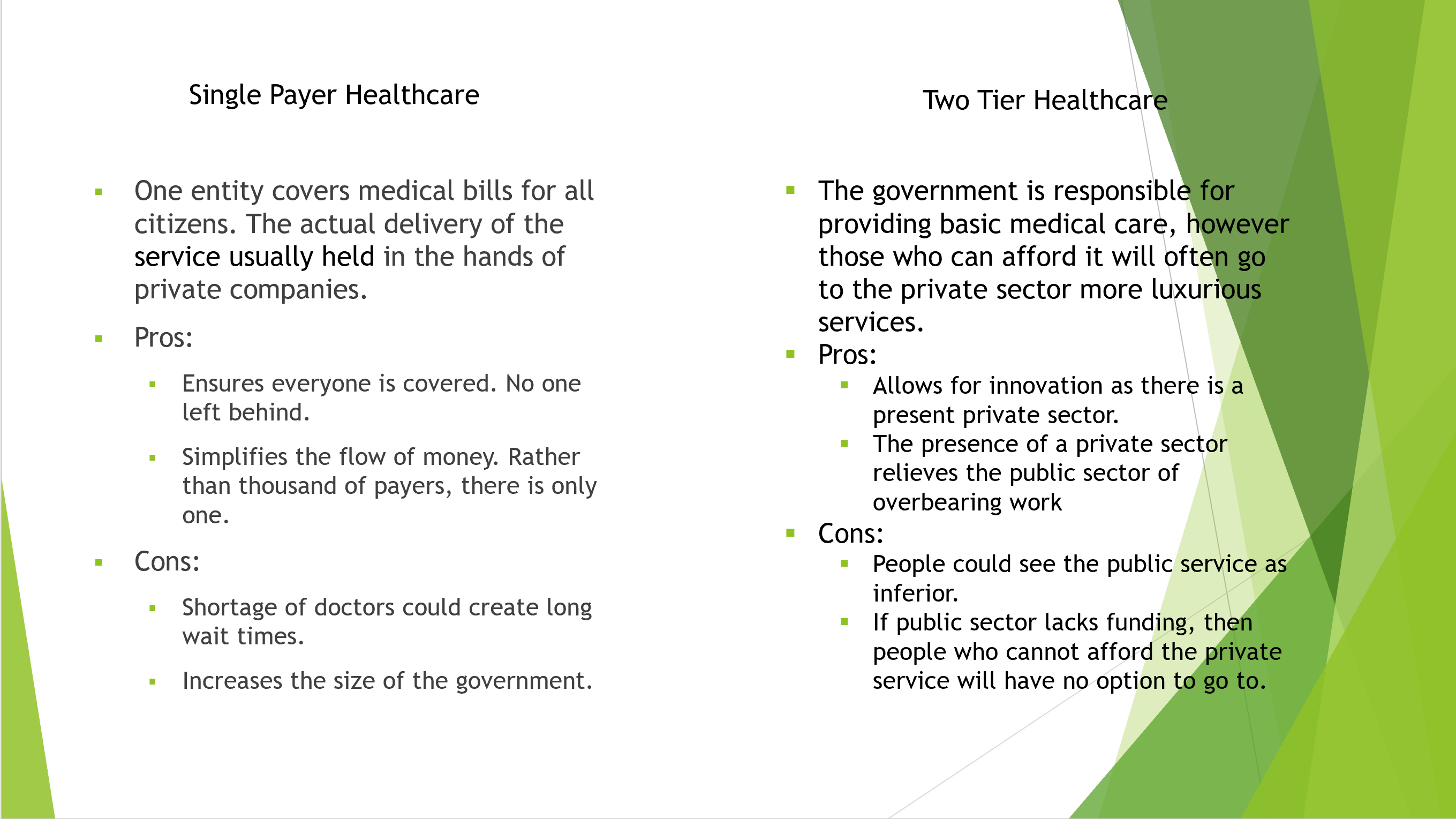are more pricey due to the fact that we: Invest more on health system and service planning and administration Have higher pharmaceutical expenses Pay greater wages to health care professionals Other studies referral problems such as higher usage rates of expensive medical innovation and "protective" medical practices as likewise contributing to greater health care expenses in the U.S (more about that later).
relate to administrative tasks, compared to other countries in the JAMA report, which average 1-3% for administrative costs. Although not transparent to clients, administrative costs are high, and all of us pay for them. Health care administration services consist of: Developing client and quality enhancement programs Reporting data for medical research studies Working out with payers which takes in a considerable quantity of time offered the broad variety of U.S.
Seeming like you're paying a lot when you go to the drug store? It's not The original source surprising, considered that on average, in 2016 the U.S. spent nearly double the amount on pharmaceutical costs per capita ($ 1,443) that other countries invested ($ 749). While numerous other nations have actually assigned federal government firms that work out prices with pharmaceutical companies when they want to release prescription drugs on the market, the U.S.
Rather, the U.S. permits pharmaceutical manufacturers to set their own costs. Does this mean that the U.S. federal government should require drug business to price their medications lower? It's really a complex concern without any simple response - a health care professional is caring for a patient who is about to begin iron dextran. Since pharmaceutical business have the capability to set the expense of their medications in the U.S., it makes the prescription medication industry in the U.S.
Much of that investment is directed towards pharmaceutical development. Not surprisingly, the U.S. is a leader in finding prescription medication treatments and treatments, with 57% of all new prescription drugs coming from the U.S. Controling prescription prices in the U.S. could help minimize costs, but could likewise result in less investment in the pharmaceutical industry, possibly ultimately reducing development of ingenious, efficient brand-new medications.
tend to purchase a higher variety of more costly tests, and typical treatments cost more than in other comparable, developed nations. This can increase the expense of healthcare in America. Here are some examples: The U.S. performed Addiction Treatment Center 118 MRIs per 1,000 individuals, the second highest of similar countries, according to 2015 information (the most recent offered).
Which Country Spends The Most In Administrative Health Care Costs? for Dummies
The typical price for an MRI in the US was greater than other equivalent countries: $1,119, compared to $811 in New Zealand (the next highest) and $130 in Spain (the most affordable), according to 2015 data (the most recent available). The U.S. carries out more caesarean areas than many comparably rich countries, with 322 per 1,000 live births according to 2014 data (the most recent readily available).

Caesarean sections likewise cost more in the United States, $11,401 on average (ranging from $11,401 to $28,473) according to 2015 data (the most current offered). The next highest average was from Switzerland at $9,965. The nation with the most affordable average https://rafaellhaf309.postach.io/post/some-known-incorrect-statements-about-a-health-care-professional-who-is-advising-a-patient-about-the-use-of-an-expectorant was South Africa at $2,192. The U. how much do home health care agencies charge.S. performed 227 total knee replacements per 100,000 individuals, the greatest of similar nations, according to 2014 data (the most recent offered).
Total knee replacements cost more in the U.S. compared to other industrialized countries, balancing $28,184 (and varying from $18,577 to $55,579) according to 2015 information (the most current readily available). The next greatest typical cost remained in Switzerland at $20,132. The least expensive average was in Spain at $6,687. If you're a healthcare expert in the U.S., you're probably earning a lot more than your peers internationally.
With the lots of years of education, training, internships and residencies required to end up being a physician or other healthcare professional in America, a high income seems commensurate to the experience. However a number of aspects seem to point towards why there's such an inconsistency between doctor wages in the U.S. versus other developed nations: A restricted number of American medical school and medical residencies openings, resulting in a minimal supply of doctors The requirement for American medical professionals to complete a residency program in the U.S.
Many other nations do not require a residency to practice. This requirement likewise restricts the variety of physicians in the U.S. A greater number of physicians in the U.S. around two-thirds of them are specialists, while in other nations, the numbers are reversed with almost two-thirds being family doctors. As an outcome in the U.S., professionals who bill for services at greater rates often carry out regular tests that could be efficiently administered by family doctors.
due to factors such as: The continuous retirement of baby boomer generation doctors An aging U.S. population, driving up need for health care services The ongoing limit on federal financing for medical residency programs, due to the 1997 Balanced Budget plan Act guidelines. Unless our pool of practicing physicians in the U.S.
Some Of What Is Health Care Financing
A 2016 American Medical Association (AMA) survey discovered that 34% of physicians have actually had a medical liability claim submitted against them at some time in their professions. And the longer their career, the most likely they are to have been sued, with nearly half of physicians 55 years old and older having actually been sued. Maybe that's why it isn't much of a stretch to see why physicians would engage in "defensive" medication.
These practices enable doctors and health care centers to safeguard themselves in case of client litigation, but they likewise drive up costs due to excessive screening and overtreatment. One study recommended that in the U.S., defensive medicine practices include up to $850 billion each year, comprising as much as 34% of the annual healthcare expenses in the U.S.
being so expensive, and no clear end in sight, this might be an excellent time to consider whether health insurance could be a great worth for you. These qualified health insurance offer detailed significant medical insurance coverage which complies with the minimum important coverage standards of the ACA. The yearly open enrollment duration for ACA coverage typically ends in December.
Some health strategies do not fulfill ACA requirements for significant medical protection, but might still help you lower your health care expenditures. These kinds of strategies often might have lower premiums than ACA marketplace exchange strategy premiums. This economical insurance choice is developed to assist supply you financial protection from unanticipated medical scenarios for a limited time period.
One factor that premiums are lower for short-term health insurance plans is that they do not satisfy ACA requirements for essential coverage, nor do they normally cover pre-existing medical conditions. Providers typically covered by short-term medical insurance include physician office sees, medical facility space and board, surgery and emergency clinic treatment.
By not covering pre-existing conditions or conference ACA requirements, short-term health insurance strategies are able to provide much lower premiums than ACA marketplace exchange strategy premiums, however you might be denied protection. This kind of strategy can help cover your expenses if you're confessed to the healthcare facility for an illness or injury.
Which Statement About Gender Inequality In Health Care Is True? Fundamentals Explained

These policies might be adjustable and offer you the choice to include protection for outpatient services such as preventive care, immediate care, and even lab tests and X-rays. To find out more about coverage options that might help you lower your out-of-pocket healthcare costs find out which alternatives are offered in your state.